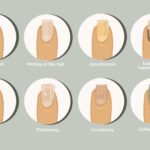Your precious little one deserves the ultimate protection on every car ride. Infant car seats are designed to be your baby’s haven in a crash, but even the most innovative seat can’t fulfill its purpose if it’s not chosen or installed correctly. Here are 8 common mistakes parents make with infant car seats, along with solutions to keep your baby safe:
1. Skipping the Research: Understanding Your Options
There’s no “one-size-fits-all” approach to car seats. Here’s a breakdown of the most common types to help you make an informed decision:
- Infant-only seats: Designed for newborns up to around 30 pounds or 32 inches tall, these offer a snug and supportive environment for your baby’s initial journeys.
- Convertible seats: These versatile car seats transition from rear-facing infant seats to forward-facing toddler seats, offering long-term use.
- Travel systems: Combining a car seat with a stroller base, these provide a convenient solution for seamless transitions between car and stroller.
Consider factors like weight and height limits, ease of installation, comfort features for your baby (head and body support), and compatibility with your stroller (if applicable) when choosing the best fit for your needs and budget. Reading online reviews and consulting with experienced parents or car seat technicians can also be valuable resources.
2. Size Mismatch: Ensuring a Snug and Safe Fit
A car seat that’s too big can leave your baby wiggling excessively, compromising safety in a crash. Conversely, a seat that’s too small can be uncomfortable and restrict proper growth. Here’s how to find the perfect fit:
- Always check the car seat’s weight and height limits. Most infant car seats are designed for newborns up to around 30 pounds or 32 inches tall.
- Test the fit before you buy. Place your baby in the seat with their winter clothes on. They should have a snug fit, with minimal room for movement (no more than an inch of space). Their head should be well-supported, and their legs shouldn’t be cramped.
3. Forgetting About Your Car: Compatibility is Key
Not all car seats are compatible with all vehicles. Some cars have specific latch systems (lower anchors and tethers) or require top tethers for secure installation. Here’s how to ensure compatibility:
- Consult your car’s owner’s manual for car seat compatibility information. This section will specify the type of car seat anchorage system your car is equipped with.
- Double-check that your chosen seat has the necessary features for a safe fit in your vehicle. Look for labels or information on the car seat itself that indicate compatibility with latch systems or top tethers. If you’re unsure, consult a salesperson or car seat technician for assistance.
4. The Used Car Seat Trap: Why New is Best
The history of a used car seat is unknown. It could be damaged in a previous accident, have missing parts, or be past its expiration date. These factors significantly compromise safety. Here’s why a new car seat is the best choice:
- Invest in a brand-new car seat from a reputable retailer. This ensures your car seat meets the latest safety standards and hasn’t been compromised in any way.
- Peace of mind is priceless. Knowing your car seat is brand new and functions optimally provides invaluable peace of mind during every journey.
5. Installation Errors: Getting it Right From the Start
A car seat is only as effective as its installation. Many parents struggle with proper tightening, harness positioning, and anchor attachment. Here’s how to ensure a secure fit:
- Don’t rely on guesswork! Read your car seat’s manual carefully and follow the instructions precisely. There will be diagrams and step-by-step guides specific to your car seat model.
- Most hospitals offer car seat installation checks after discharge. Take advantage of this valuable service to ensure your car seat is installed correctly.
- You can also find certified car seat technicians in your area. They can inspect your installation and provide guidance if needed. The National Highway Traffic Safety Administration (NHTSA) has a helpful tool to locate a certified technician in your area: https://www.nhtsa.gov/campaign/right-seat
6. Ignoring the Expiration Date: Safety Standards Evolve
Car seats, like other baby products, have expiration dates due to material degradation and safety standard changes. Using an expired car seat compromises its effectiveness in a crash. Here’s how to stay safe:
- Locate the expiration date on your car seat’s label. It’s typically found on the car seat shell or the user manual.
- Replace your car seat well before the expiration date arrives. Aim to purchase a new car seat a few months before the existing one reaches its expiration. This ensures you have ample time for research and purchase without compromising your baby’s safety during any interim car rides.
7. Inconsistent Car Seat Use: Every Ride Matters
Every trip, no matter how short, requires your baby to be buckled up in their car seat. Here’s why consistent use is crucial:
- Even a sudden stop or minor collision can cause serious injuries to an unbuckled baby. Their tiny bodies can be thrown around the car, leading to head and neck injuries.
- Develop safe car seat habits from the beginning. This ensures your baby gets used to being buckled up and reduces the likelihood of resistance in the future.
8. Skipping Registration: Missing Out on Safety Updates
Registering your car seat with the manufacturer allows them to notify you of any safety recalls specific to your model. Here’s why registration is important:
- Safety recalls can happen even with reputable car seat brands. These recalls may involve faulty parts or design flaws that could compromise safety in a crash.
- Registration ensures you’re aware of any potential hazards and can take immediate action to protect your baby. This may involve receiving a free repair kit or replacement car seat from the manufacturer.
Remember: When it comes to your baby’s safety, there are no shortcuts. Take the time to choose the right car seat, install it correctly, and use it every single ride. For additional resources and support, visit the National Highway Traffic Safety Administration (NHTSA) website at https://www.nhtsa.gov/.
By following these tips, you can ensure a safe and secure journey for your most precious cargo. Every step you take to prioritize your baby’s car seat safety is an investment in their well-being.





